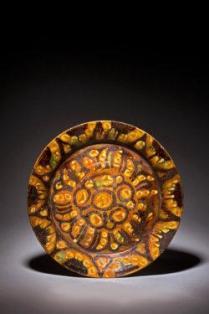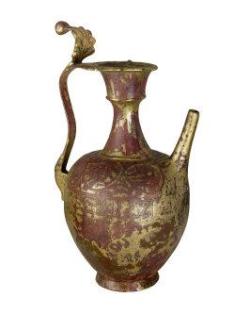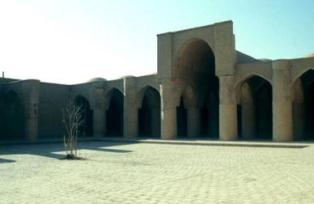The Abbasids (r. 132-656 AH / 750-1258 CE) were the third Muslim caliphate following the Umayyads and the four Rightly Guided Caliphs, al-khulafa al-rashidun. They succeeded the Umayyads around 132 AH / 750 CE as the caliphs of the (then) Muslim world.
Once in power, they began to persecute the Shi‘i Imams and their followers as the foundations of the Shi‘i Imamat are rooted in their claimed lineage from the family or house of the Prophet, the ahl al-bayt; a claim that the Abbasids had also made about themselves, tracing their lineage from Abbas b. Abd al-Muttalib, an uncle of the Prophet. Initially the Abbasids established themselves in Samarra. In 221 AH / 836 CE, they moved their capital to Baghdad, a city they had founded in 145 AH / 762 CE.
Home to people of many different backgrounds, Baghdad rapidly became one of the most important cities in the Muslim lands, and beyond. It became a centre of great achievement in literature, religious thought, natural sciences, mathematics, philosophy and many other disciplines. Some of these achievements were made possible through the translations of Greek, Persian and Sanskrit texts into Arabic. This reflected an open and welcoming attitude to knowledge and learning, whatever its source. From the reign of caliph al-Mansur (d. 158 AH / 775 CE) until around 236 AH / 850 CE, the Abbasids ruled a vast, unified empire. Although Baghdad flourished, there were many difficult periods and at times the city suffered from economic and political problems. Rival Abbasid princes fought for power, and there were quarrels between the caliphs in Baghdad and their governors in Khurasan. These clashes led to a civil war (193-8 AH / 809-13 CE) between two Abbasid princes, al-Amin and al-Ma‘mun. Al-Amin had the support of the notables in Baghdad, while al-Ma‘mun’s troops besieged Baghdad in 196-7 AH / 812-13 CE, and captured and killed al-Amin. Conflicts and troubles continued throughout the century.
The eighth Abbasid caliph, al-Mu‘tasim (d. 218 AH / 842 CE) recruited a new army. Its fighting men were all Turkish slaves. The caliph contemplated that since they had no tribal or political ties, the Turkish troops would be different from Arab or Persian troops, their loyalty would be only to the caliph. This marked the beginning of the entry of the Turks of Central Asia into Muslim lands. However, fights broke out soon between the new arrivals and the local people of the city. A further fragmentation in the empire took place after the assassination of caliph al-Mutawakkil in 247 AH / 861 CE. Various provinces of the empire sought independence and established their own dynasties. Political troubles like these made it necessary for the Abbasid caliphs to have a strong and loyal army.
To escape the tensions, the caliph al-Mu‘tasim had built a new capital in Samarra (130 Km from Baghdad) where the caliphs and their courtiers could live. They resided in the enclosures from 215-277 AH / 830-890 CE, closely guarded by their Turkish soldier slaves; gradually they became their captives. At the same time, the Abbasid Caliphs slowly lost control of distant provinces. Eventually, governors of Khurasan, Egypt and Tunisia all seized power and declared independence from Abbasid rule.
Finally, the Abbasids faced severe devastation and territorial losses at the Mongol onslaughts in 656 AH / 1258 CE. Following these events, a shadow Abbasid caliphate was established in 656 AH / 1258 CE that continued until 923 AH / 1517 CE, under the tutelage of the Mamluks in Cairo.
Citation
“Abbasid Caliphate”. Encyclopedia Iranica Online, 2011.
http://www.iranicaonline.org/articles/abbasid-caliphate [accessed June 2013]
Hattstein, Markus and Peter Delius. Islam: Art and Architecture, (Cologne: Könemann, 2000).
“Abbasids.” Encyclopaedia of Islam, Second Edition, 2013.
http://referenceworks.brillonline.com/entries/encyclopaedia-of-islam-2/abbasids-COM_0002?s.num=1&s.f.s2_parent=s.f.book.encyclopaedia-of-islam-2&s.q=Abbasid [accessed May 2013]
Shaban, M. A., The Abbasid Revolution, (Cambridge: Cambridge University Press, 1970).
Ettinghausen, Richard and Grabar, Oleg, ‘The Abbasid Tradition: 750-950’, in The Art and Architecture of Islam 650-1250, (New Haven: Yale University Press, 1987), 75–125.
Iraq under the Abbasids (Geography, Art and Architecture)
http://www.davidmus.dk/en/collections/islamic/dynasties/abbasiderne [accessed June 2013]
Abbasid Monuments
http://www.archnet.org/timelines/48/period/Abbasid/year/750 [accessed June 2013]



